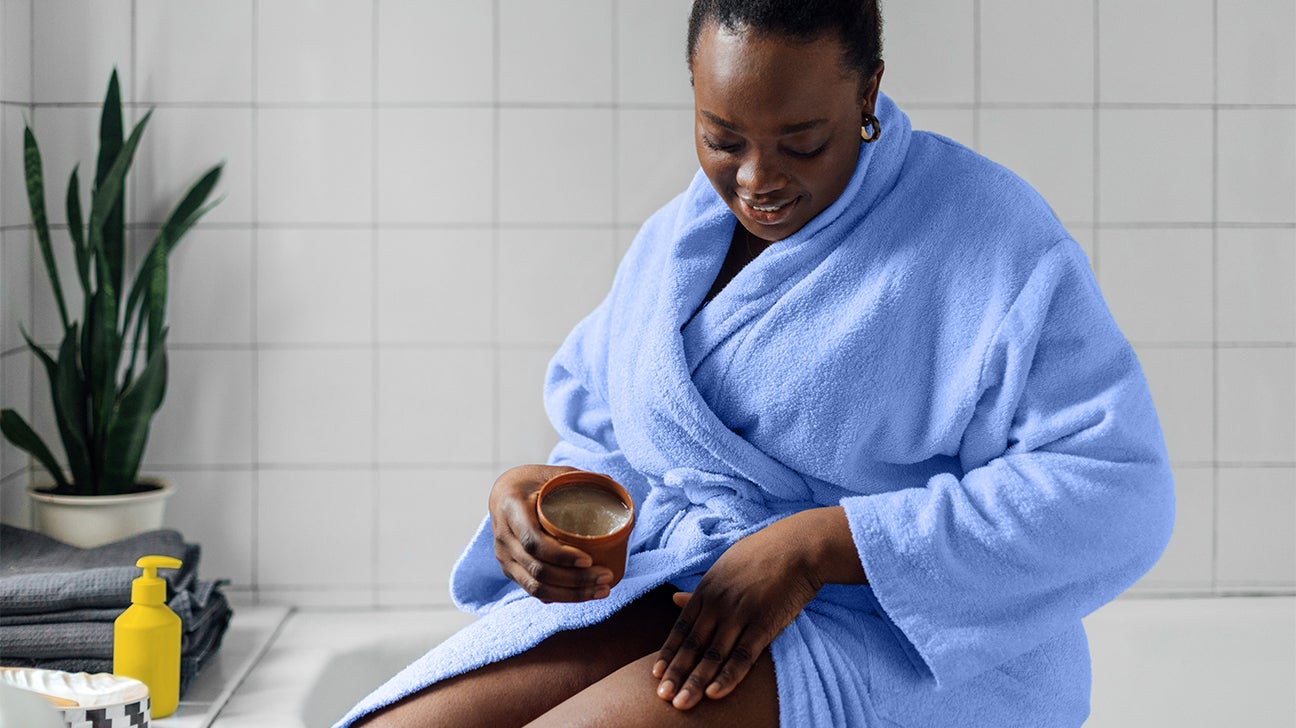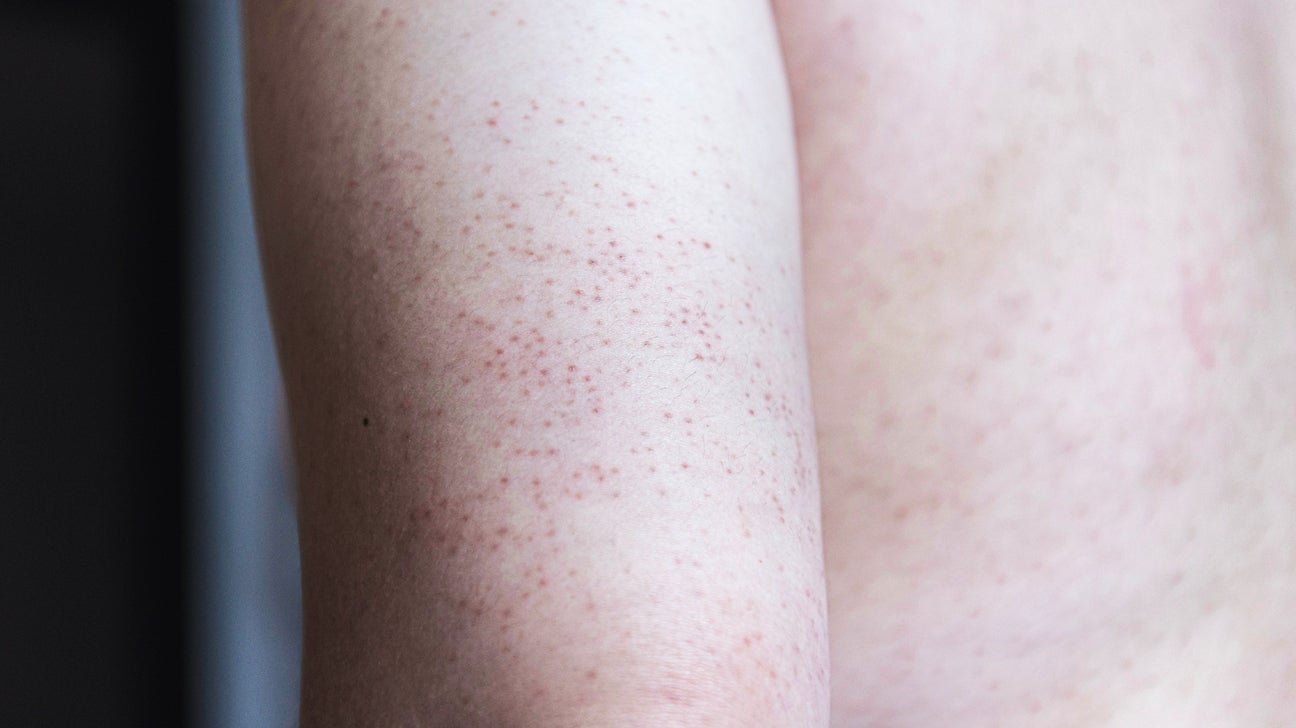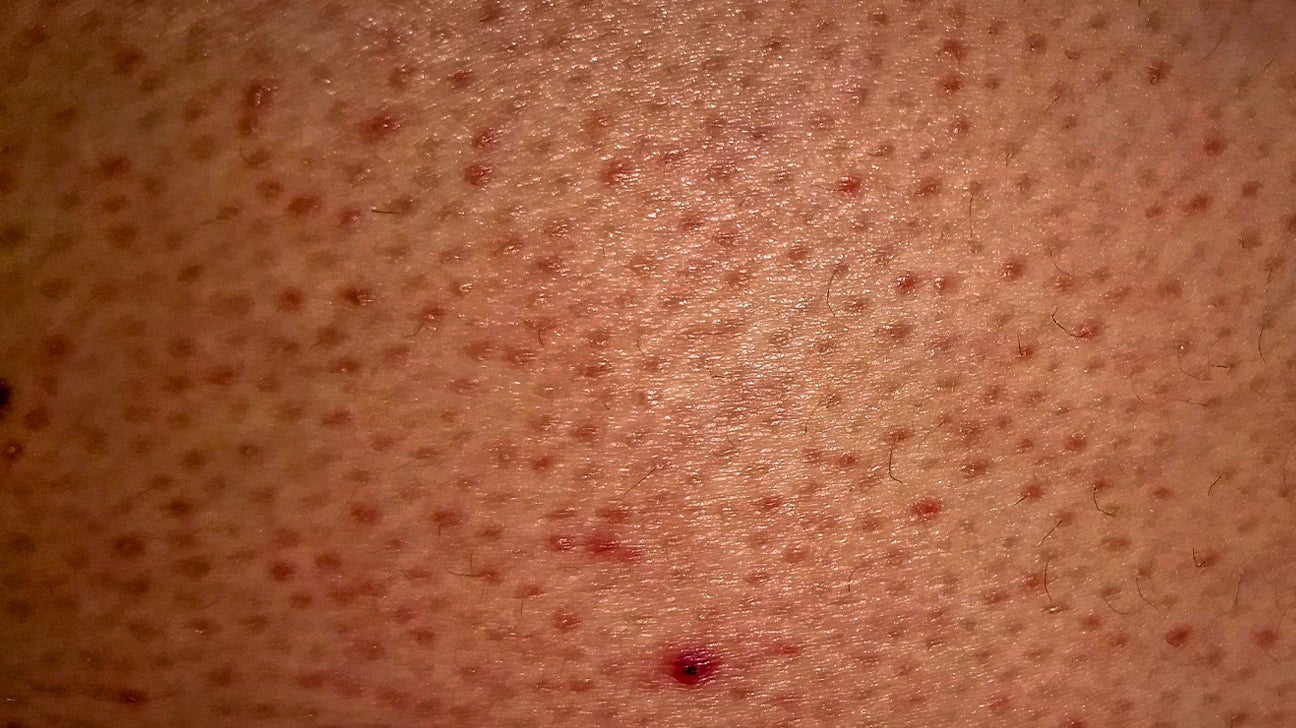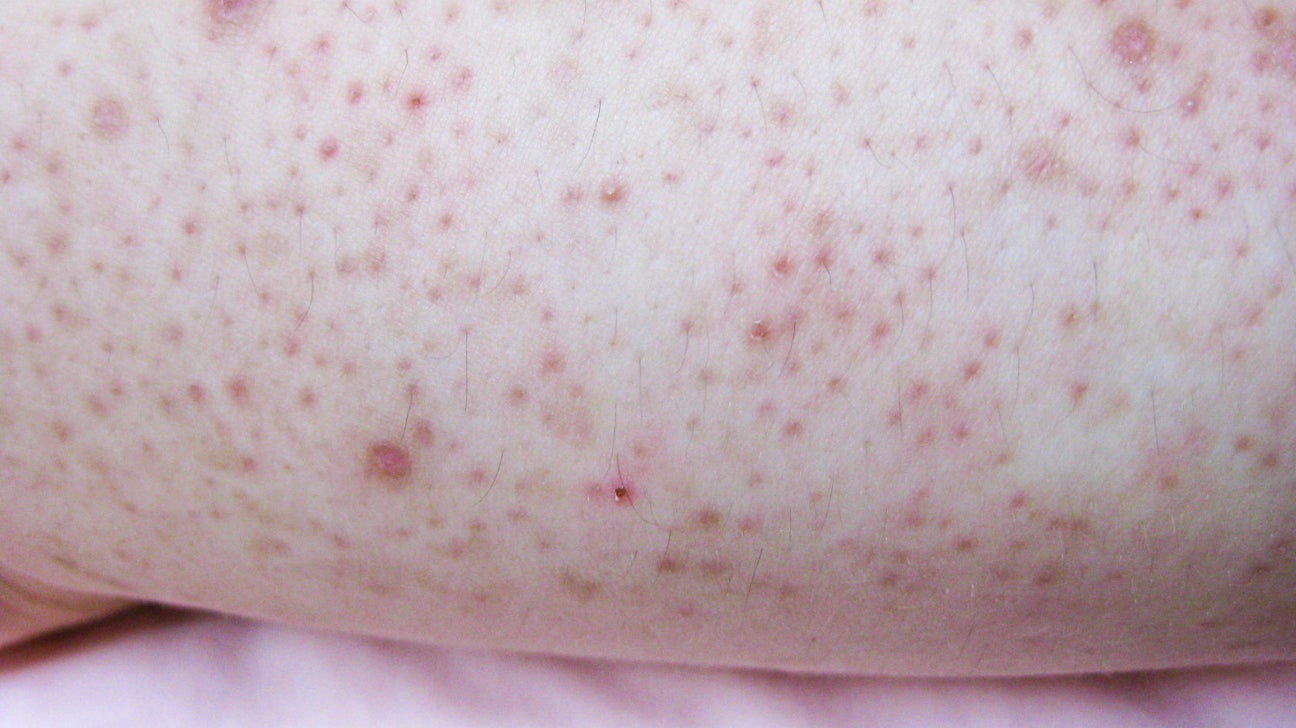Got rough, tiny bumps on your arms and wondering what gives? It might be keratosis pilaris, aka chicken skin because it, well, kind of looks like a plucked chicken.
So, what is keratosis pilaris exactly?
Keratosis pilaris is a skin condition that forms red or brown patches of rough-feeling bumps. These bumps are caused by dead skin cells clogging your hair follicles.
This means you will only find keratosis pilaris on areas of your body where hair grows. They can pop up on your upper arms, thighs, cheeks, and even your butt.
Here’s how to spot the condition, treat it, and prevent keratosis pilaris from getting worse.

What are the symptoms of keratosis pilaris?
Keratosis pilaris is pretty harmless and isn’t painful. The main symptom is aesthetic.
Skin basically looks like it’s covered in red or brown goosebumps — without the sinking worried feeling. Hence, the nickname, “chicken skin.”
Other symptoms can include:
- dry skin
- pink, red, or discolored appearance of your skin
- itch and irritation
- a sandpaper feel to the bumps
- bumps that differ in shade from your skin tone
What does it look like?
Need a visual, here’s what keratosis pilaris can look like.
What the heck causes keratosis pilaris?
The hair protein keratin building up in your pores is usually to blame. When keratin clogs up your pores, your body hair is trapped under your skin. This results in small bumps appearing where your hair is trapped.
We don’t know the exact cause of keratosis pilaris, but it might be associated with atopic dermatitis and good ‘ol genetics.
Chicken skin is also common if you have:
- hay fever
- Celtic ancestry
- obesity
- ichthyosis vulgaris
- skin with less pigment
Age and gender also play a role. It’s more likely to affect women and people under 30.
Hormonal shifts can trigger keratosis pilaris, which means pregnancy and puberty can lead to chicken skin.
What’s the cure for keratosis pilaris?
There’s no golden egg to cure your chicken skin. But by the time you turn 30, you may grow out of it and trade your arm bumps for a rogue gray hair.
So, what can you do? Treatments and time are your best bet.
Chicken skin treatment: How to get rid of keratosis pilaris
Derm treatments
Treatment isn’t necessarily a cure-all, but a dermatologist can help you find a way to lessen the appearance and keep things less itchy.
A prescription or over-the-counter (OTC) topical cream with urea and lactic acid can to tackle those pesky blocked hair follicles and help alleviate dry, itchy skin. This skin care duo works by loosening and removing dead skin cells.
Other treatments for keratosis pilaris include:
- exfoliating treatment such as microdermabrasion
- chemical peel
- retinol creams
Test before you treat!
Topical treatments that include acids can be irritating and come with side effects like redness or discoloration, burning, irritation, and dryness.
Make sure to chat with your derm before lathering on a new product and always do a patch test first!
Experimental treatments
Photopneumatic therapy may help tackle clogged pores and inflammation. Participants of a 2013 study reported this light-based therapy improved skin texture by 53 percent.
Vascular laser treatment is also an experimental treatment option. A small clinical trial found using an 810-nm pulsed diode laser improved skin texture and roughness of keratosis pilaris.
Keratosis pilaris home remedies
If you’re more into DIY skin care, there are home remedies that may lessen the appearance of keratosis pilaris. These treatments can provide some necessary self-care while tackling your chicken skin’s itch, dryness and irritation.
- Trade in razors and wax strips for laser hair removal. Shaving and waxing can further irritate your bumps while laser hair removal targets hair follicles at their roots before they can get clogged.
- Shorten your bath or shower. Hot water for extended periods of time can cause further irritation. Shower or bathe in warm water for 20 minutes or less.
- Exfoliate. Gently buff off dead skin with a loofah or exfoliating brush.
- Layer on the lotion. Try moisturizers with alpha hydroxy acid (AHAs) like lactic acid to hydrate your skin and help cell turnover to keep dead skin cells at bay.
- Use mild cleansers and avoid bar soap. Bar soap and cleansers with fragrances can dry out your skin even more.
- Avoid self-tanner. This practice won’t cover the bumps and may cause them to stand out even more.
- Use a humidifier. Adding a humidifier to your home decor edit can help add moisture to the air and prevent dryness in your skin.
The takeaway
Chicken skin on your wings = delicious. Chicken skin on your skin = annoying but harmless.
There’s no known cure for keratosis pilaris, but treatments can lessen its appearance or alleviate any itch or irritation.
If treatments don’t work, a birthday may be the cure. The passage of time may be the best way to get rid of chicken skin as most cases disappear by the time you turn 30 years old.




0 Commentaires